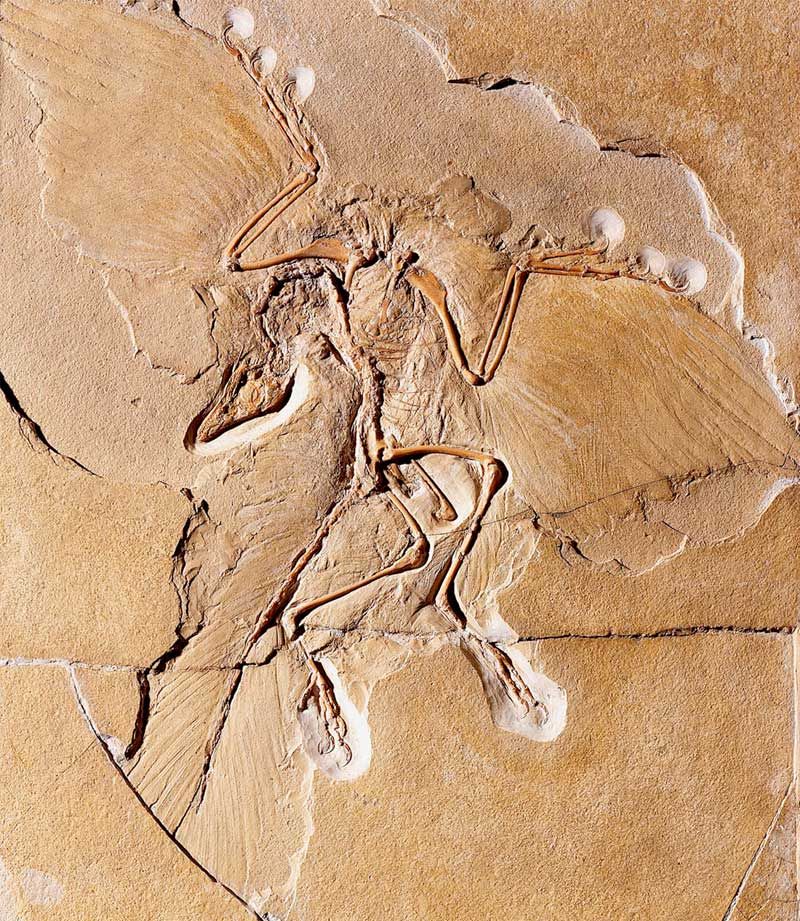German paleontologists led by Dr Oliver Rauhut of the Ludwig-Maximilians-Universität in Munich, Germany, have discovered a new specimen of Archaeopteryx – a feathered reptile that lived during the Jurassic period, about 150 million years ago – with extensive feather preservation. The specimen shows that the entire body of Archaeopteryx was covered in pennaceous feathers.

Reconstruction of Archaeopteryx in flight. Image credit: R. Liebreich / Bavarian State Collection for Paleontology and Geology, Munich.
Birds arose during the Jurassic from small feathered dinosaurs. They were not alone in the skies, which were dominated by pterosaurs.
Archaeopteryx is regarded as the first-known bird. It was a small creature with primitive traits like teeth and a long bony tail.
“Since its first discovery in the 1860s, Archaeopteryx has been the object of many debates in relation to bird evolution, especially flight and feather evolution. There were debates if it was ground-dwelling or arboreal, if it could fly or not,” said Dr Rauhut, who is the senior author of a paper published in the journal Nature.

“Some scientists had suggested the vanes of its feathers were too weak to support flight, but the new fossil backs the idea Archaeopteryx was completely capable of flying. It retains its status as the original bird,” added first author Dr Christian Foth, also of the Ludwig-Maximilians-Universität.
The new specimen of Archaeopteryx belongs to the private collection of Dr Burkhard Pohl from the Wyoming Dinosaur Center at Thermopolis, Wyoming.
“Unfortunately, we have no exact dates about when and in which quarry the new specimen of Archaeopteryx was found. However, it can be said with certainty that this specimen is from the Solnhofen Formation,” the paleontologists explained.

The newly discovered specimen of Archaeopteryx under UV-light. Scale bar – 5 cm. Image credit: Christian Foth et al.
The fossil shows that contour feathers (basic vaned, quill-like feathers) of Archaeopteryx covered its entire body up to the head as in modern birds.
“For the first time, it has become possible to examine the detailed structure of the feathers on the body, the tail and, above all, on the legs,” Dr Rauhut said.

The shafts of the wing feathers of Archaeopteryx were comparable in strength to those of modern birds.
And the plumage of the hindlimbs looked like that of modern birds of prey like falcons and eagles.
“The feathers on its legs were quite long but were restricted to the thigh and shank, looking like feather trousers. They may have been used for display and to stabilize flight during landing,” the scientists explained.
Source: sci.news








